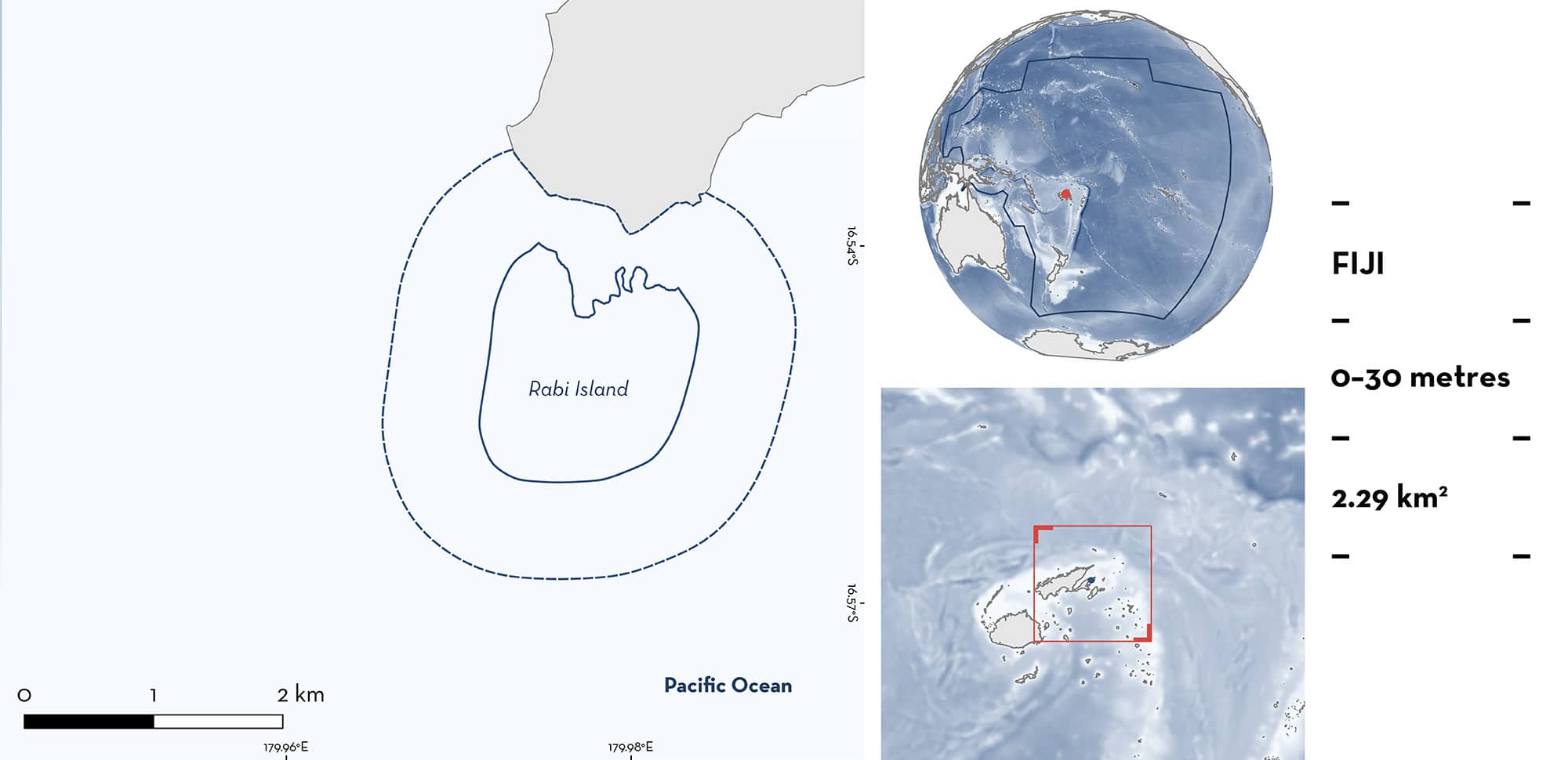ISRA FACTSHEETS
ISRA FACTSHEETS
NEW ZEALAND & PACIFIC ISLANDS REGION
Rabi Island
Summary
Rabi Island is located near Vanua Levu in the northeast of Fiji. The area lies off the exposed southern tip of Rabi Island on a submerged reef which extends southwards. During April–October, when winds are seasonally stronger, dense plankton patches form in surface waters. Within this area there are: threatened species and feeding areas (Reef Manta Ray Mobula alfredi).
Download factsheet
Rabi Island
DESCRIPTION OF HABITAT
Rabi Island is located ~7 km from the coast of Vanua Levu in Fiji. The area lies near the southern tip of Rabi Island on a section of small, submerged reef extending southwards and offshore. The reef is dominated by hard corals and the reef top reaches a depth of ~8 m at high tide. Seasonal southeasterly winds increase in strength and consistency across Fiji from April–October (Kumar & Prasad 2010). It is hypothesised that during the austral winter stronger winds bring cool, nutrient rich water into the area, causing primary productivity to increase and dense zooplankton patches to form. On the falling tide, the current flows westward through the area, causing the dense zooplankton to be concentrated in surface waters (L Gordon pers. obs. 2024).
This area overlaps with the Taveuni and Ringgold Islands Ecologically or Biologically Significant Marine Area (EBSA; CBD 2024).
This Important Shark and Ray Area is benthic and pelagic and is delineated from surface waters (0 m) to 30 m based on the bathymetry of the area.
CRITERION A
VULNERABILITY
One Qualifying Species considered threatened with extinction according to the IUCN Red List of Threatened Species regularly occurs in the area. This is the Vulnerable Reef Manta Ray (Marshall et al. 2022).
CRITERION C
SUB-CRITERION C2 – FEEDING AREAS
Rabi Island is an important feeding area for one ray species.
Reef Manta Rays seasonally aggregate in the area to surface feed on dense zooplankton patches between April and October (M Walser pers. obs. 2024). Feeding aggregations are seen on almost all (90%) trips to the area during the April–October season, with ~15 trips annually between 2017–2024 (except for 2020–2021) (M Walser pers. obs. 2024). An average of four individuals are encountered, with higher numbers (up to 10) on the falling tide when a strong current runs westward. However, some feeding Reef Manta Rays are also seen at other times during the tidal cycle and when currents are weak (M Walser pers. obs. 2024). A cleaning station, where cleaner fishes remove parasites and dead skin off Reef Manta Rays (Armstrong et al. 2021), is also located in this area, with usually one individual present at a time (L Gordon & M Walser pers. obs. 2024). From 2011–2022, a total of 87 Reef Manta Ray sightings of 35 photo-identified individuals were sporadically recorded by citizen scientists in the area, with most reports contributed in 2021–2022 (Manta Project Fiji unpubl. data 2024). Half of these individuals (n = 17) were resighted in multiple years (Manta Project Fiji unpubl. data 2024), highlighting the continued use of this important feeding area.
Download factsheet
SUBMIT A REQUEST
ISRA SPATIAL LAYER REQUEST
To make a request to download the ISRA Layer in either a GIS compatible Shapefile (.shp) or Google Earth compatible Keyhole Markup Language Zipped file (.kmz) please complete the following form. We will review your request and send the download details to you. We will endeavor to send you the requested files as soon as we can. However, please note that this is not an automated process, and before requests are responded to, they undergo internal review and authorization. As such, requests normally take 5–10 working days to process.
Should you have questions about the data or process, please do not hesitate to contact us.


